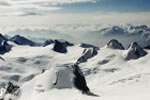


 |
 |
 |
Valley glaciers
Valley glaciers are streams of flowing ice that are confined within steep walled valleys, often following the course of an ancient river valley. The downward erosive action of the ice carves the valley into a broad U shape, in contrast to the steeper V shape that is produced during the early stages of erosion by rivers. A U shape valley with a flat floor is good evidence of the past glaciation of an area.
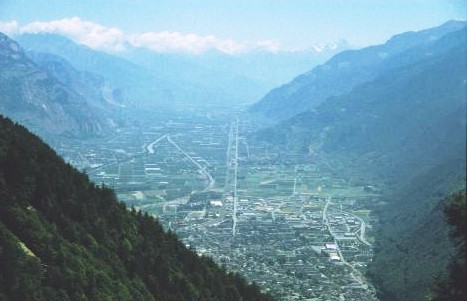
Valley glaciers usually start life
in either corries or ice sheets. Glacial ice flowing down hill from either of
these sources will follow any existing valleys or easy routes, eroding and enlarging
them as it moves.
Often several corrie glaciers will combine to feed a single valley glacier.
In the photograph below, three small corries are feeding a small valley glacier
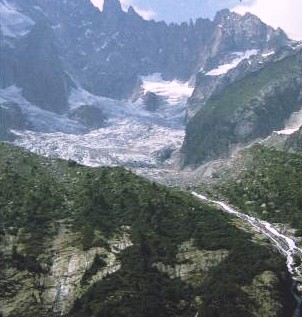
In large systems, valley glaciers may join and form larger glaciers with much greater erosional power than they had as smaller individuals. As the main glacier erodes its valley downwards more quickly than surrounding valleys, they are left behind, finally becoming hanging valleys.
Rock debris falls from the steep valley walls and litters the glacier surface. This occurs particularly along the edges, where rock debris builds up and is known as lateral moraine. Where two glaciers meet and flow into each other, the two edges where the meeting occurs become the centre of the new glacier. The two lateral moraines combine to form a medial moraine.
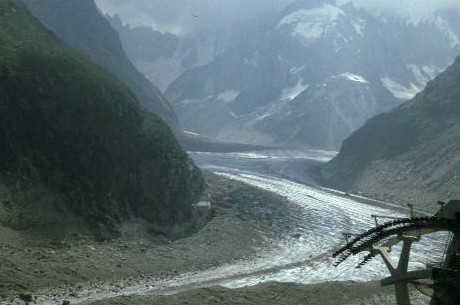
From the glacier snout, meltwater flows down the valley within braided river systems. Vast quantities of eroded material are transported by these fast flowing streams. Material moved away from the glacier in this way is called fluvioglacial, distinguishing it from material deposited at the site of the glacier. Deposits left in situ by retreating glaciers are called till deposits.
Braided glacial streams are unstable,
frequently altering their course and bed shape. In winter, when they and their
glacial source freeze, they may stop flowing. During the spring thaw and hot
summer they may become raging torrents capable of moving rocks the size of family
cars!
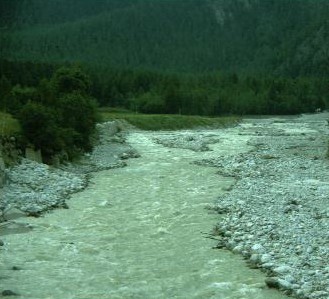
The tendency of braided streams to alter course is not a problem in wilderness areas, but could represent a serious hazard if it occurred within an inhabited locality. To protect villages and towns, potentially dangerous streams are often diverted along courses lined with thick concrete or stone walls. Regular dredging removes the larger boulders and deposits of silt, whilst the strong walls confine the water even under flood conditions.

We value
your ideas and suggestions. Please contact the
maintainer of this site.
This page
can be found at: http://www.geography-site.co.uk
Last update to
this statement was on:
February 23, 2006
© Copyright Geography Site